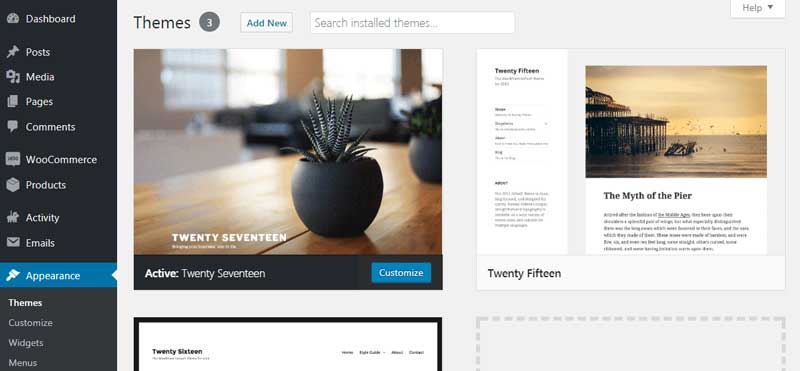SEO to AEO: The Evolution of Optimization for AI-Based Search Engines

Search engine optimization (SEO) has long been the cornerstone of digital marketing, helping businesses rank higher in search results and drive organic traffic. However, with the rise of artificial intelligence (AI), traditional SEO is evolving into a more advanced form known as AEO (Answer Engine Optimization). As AI-powered search engines prioritize direct, accurate, and contextual answers, businesses must adapt to this transformation by refining their optimization strategies.
AEO vs SEO: Understanding the Differences
While SEO focuses on ranking web pages using keywords, backlinks, and metadata, AEO vs SEO represents a fundamental shift in how search engines operate. AI-driven search engines are no longer merely indexing content; they are analyzing context, user intent, and structured data to provide instant answers. This means that businesses must shift their focus from keyword-centric optimization to structuring content in a way that AI can interpret effortlessly.
The Importance of AEO in Digital Marketing
In the modern era, search engines are transitioning from simple query-matching tools to intelligent answer engines. AEO in Digital Marketing ensures that businesses remain visible in a landscape where AI-generated responses often eliminate the need for users to click on traditional search results. Optimizing for AEO increases the chances of appearing in featured snippets, voice search results, and AI-driven search interfaces, ultimately strengthening brand credibility.
AEO Implementation: How to Optimize for AI-Based Search Engines
To successfully execute AEO Implementation, businesses need to adopt a multi-faceted approach that extends beyond traditional SEO techniques. Here are key steps to achieving effective AEO Optimization:
- Understand User Intent – AI-driven search engines prioritize precise answers. Instead of optimizing for isolated keywords, content should directly address specific user queries with structured and concise responses.
- Use Structured Data and Schema Markup – Structured Data for AEO is vital, as search engines rely on formats like JSON-LD and Schema.org to extract meaningful information.
- Optimize for Featured Snippets and Knowledge Panels – AI-powered search engines prioritize clear, fact-based content for AEO Optimization, ensuring that businesses dominate search results.
- Enhance Conversational Search Readiness – The integration of AI-powered chatbots and voice assistants requires businesses to optimize content for AEO and Voice Search.
- Improve Readability and Accessibility – Well-structured, easy-to-digest content improves search engine comprehension and enhances the user experience.
Latest AEO Techniques for Maximum Visibility
As AI-driven search advances, businesses must adopt Latest AEO Techniques to stay ahead. These include:
- Semantic SEO and Natural Language Processing (NLP): AI now interprets meaning contextually rather than relying on exact keyword matches.
- Entity-Based Optimization: AI search engines focus on entities and relationships, making structured data a critical component of AEO Strategy.
- Multimodal Content Optimization: AI-driven engines analyze text, images, videos, and audio to provide a holistic user experience.
- Predictive Search Optimization: AI anticipates queries before users complete their searches, making proactive content creation essential.
How AEO Works: The Mechanics of AI Search Optimization
Understanding How AEO Works involves grasping the process by which AI-driven search engines analyze and serve information:
- Crawling and Indexing: AI evaluates structured data, content quality, and semantic relationships rather than just keyword density.
- Contextual Matching: Search engines map user queries to the most relevant information using NLP and machine learning.
- Personalization and Predictive Analytics: AI leverages historical data and user behavior to deliver highly relevant results.
- Conversational AI and Voice Search Optimization: AI processes spoken queries differently from typed searches, necessitating a natural and intuitive content style.
AEO and AI Algorithms: The Driving Force Behind the Shift
The relationship between AEO and AI Algorithms is pivotal. AI-driven algorithms such as BERT and MUM have enhanced search engines’ ability to understand language nuances and user intent. Businesses must prioritize clarity, structured data, and semantic relevance to align with AI’s processing capabilities.
Impact of AEO on Search Rankings
Unlike traditional ranking signals, the Impact of AEO on Search Rankings depends on:
- Authority and Credibility: Websites with high domain authority and factual accuracy are favored.
- Structured Information: Pages leveraging Structured Data for AEO are more likely to appear in direct answer boxes.
- User Engagement Metrics: AI evaluates metrics such as click-through rates, dwell time, and interactions to determine content relevance.
Content Optimization for AEO: Best Practices
A strong Content Optimization for AEO strategy includes:
- Writing in a conversational tone to align with natural language queries.
- Using bullet points and concise formatting for AI-friendly content extraction.
- Ensuring factual accuracy and linking to reputable sources.
- Creating dedicated FAQ sections to directly address user queries.
The Role of AEO in Voice Search Optimization
As voice assistants like Alexa, Siri, and Google Assistant become more prevalent, AEO and Voice Search optimization is crucial. Voice queries tend to be longer and more conversational. To optimize for this trend, businesses should:
- Incorporate long-tail, natural language keywords.
- Ensure mobile-friendliness and fast page load speeds.
- Optimize for local search queries, as voice search is frequently used for location-based searches.
AEO in the Era of AI Search Engines
With AI transforming information retrieval, AEO in the Era of AI Search Engines is the new frontier. Businesses must adapt by:
- Prioritizing high-quality, well-researched content.
- Structuring content for AI-driven discovery rather than relying solely on keyword placement.
- Optimizing digital assets for multimodal AI analysis, including text, images, and videos.
The Importance of Structured Data in AEO Optimization
A significant aspect of Structured Data for AEO involves:
- Implementing schema markup to help AI understand content context.
- Using structured metadata to categorize information efficiently.
- Ensuring consistent data formatting to enhance AI readability.
AEO and Rich Snippets: Enhancing Visibility
AEO and Rich Snippets work hand in hand. Rich snippets improve click-through rates and search visibility. Businesses should:
- Utilize structured data markup to enable rich snippets.
- Provide clear, informative responses to frequently searched queries.
- Optimize for featured snippets and knowledge panels.
The evolution from SEO to AEO represents a significant shift in digital marketing. As AI-powered search engines prioritize direct answers over traditional rankings, businesses must adopt structured data, conversational AI, and multimodal content strategies. By understanding AEO vs SEO, leveraging Latest AEO Techniques, and optimizing for AI-driven search experiences, brands can maintain visibility and authority in this new era of intelligent search optimization.



